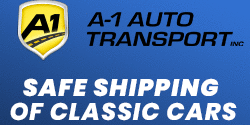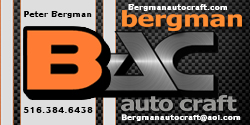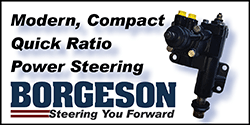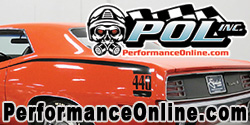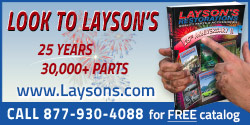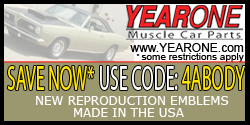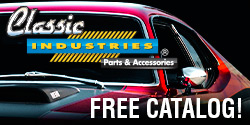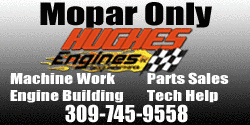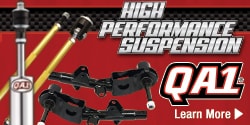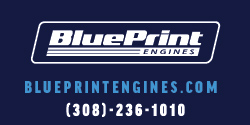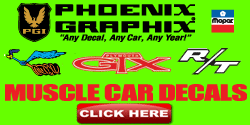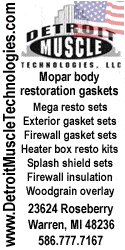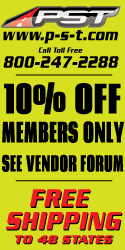Tubular upper control arms a good thing because of the additional caster that's built into pretty much all the tubular control arms on the market. But, unless you're planning on running really wide rims and tires up front you can just use a set of Moog 7103 offset UCA bushings with the stock UCA's to get much better alignment numbers. If you've got a '71 you probably want BBP brakes, so, you need large ball joint UCA's anyway so it might make more sense to just buy the tubulars. For someone with the 73+ LBJ UCA's already the Moog 7103's are a great option as long as you're not going to run 9" wide rims up front.
The tubular K might save a small amount of weight, but the QA1 retains all the stock locations. So, other than looking cool I don't know what it gets you. I don't know the specifics but I have heard that it's not worth much in the weight savings department. You'd be much better off just seam welding the stock K, boxing the steering mount and gusseting the LCA pivot tubes. Do that and the stock K will be just as stiff as the QA1, if slightly heavier.
The tubular LCA's aren't really necessary. They save about 8 lbs compared to the stock LCA's. Their biggest advantage is their shorter profile, they basically allow for an extra inch of suspension travel at the frame. Which means if you're planning on lowering the car a lot, they could be helpful. I have a set for my Duster that I've yet to install. They're nice pieced, but unless you're planning on lowering to the point that header clearance becomes a significant issue they're not a must have. A set of boxing plates to gusset the stock LCA's (and fix the play on the LCA pivot as per Jim Lusk's video) and you're in business.
I run adjustable strut rods on all of my cars, as far as I'm concerned they're a must have if you're running anything other than the stock LCA bushings. And even if you're running the stock LCA bushings they're very helpful in fine tuning your suspension so that there's no binding.
Sway bar should be on anything that's intended for a handling application
Solid tie rod adjusters are a good thing, but not a mandatory thing.
Biggest items to improve handling aren't included in that kit. TORSION BARS. You need bigger torsion bars. Even plain on street drivers need bigger torsion bars. Any kind of handling application needs much bigger torsion bars. As autoxcuda said, at least 1" torsion bars. I would never run smaller than that again. PST's 1.03's are a great, less expensive option.
You need shocks to match those bars. I'm sure the QA1's are fine, but I prefer the Bilstein RCD's from PST or FirmFeel. Hotchkis' fox shocks are also amazing and a step up from the Bilsteins, but they're priced like they are too.
The Borgeson steering box is probably really nice, I run a 16:1 Flaming river manual box. Even with 275's up front. It's fine. Requires some arm strength for parking and slow speed maneuvers, but over 10mph its spectacular.
To me it looks like QA1 set up their kit like Hotchkis did. Some really cool stuff, but you don't need half of it and half the stuff you really need isn't in the kit. As far as the coilovers go, they have not been proven to handle any better than the torsion bar suspension when tuned properly. The fastest Mopar autoX and road race cars have been, and still are, torsion bar equipped cars. The rack and pinion steering is nice, but that's a ton of money for a rack and pinion. And ALL coilover conversions need chassis stiffening in the front of the chassis, the factory design was not intended to carry vertical suspension loads outside of the shocks.

